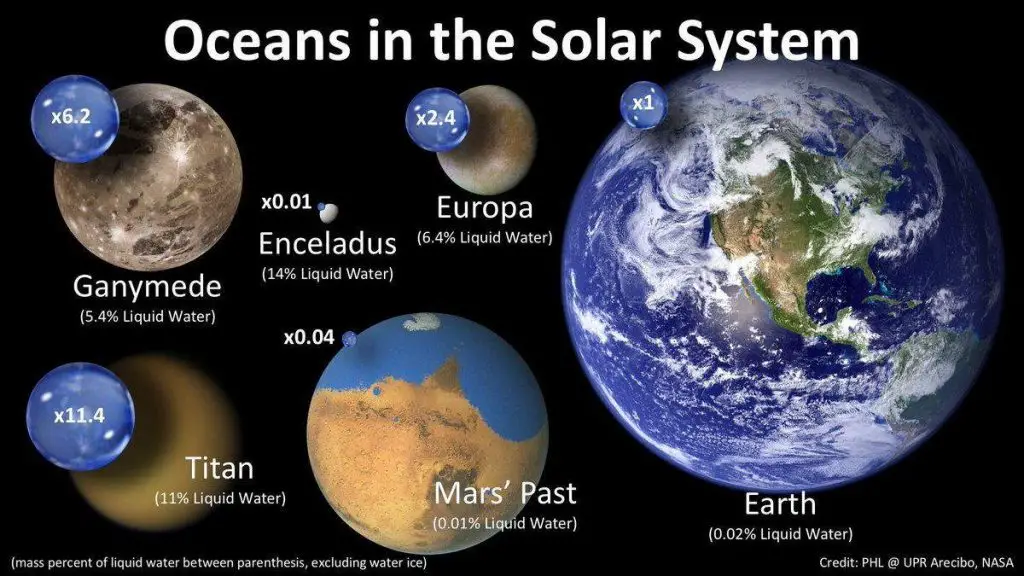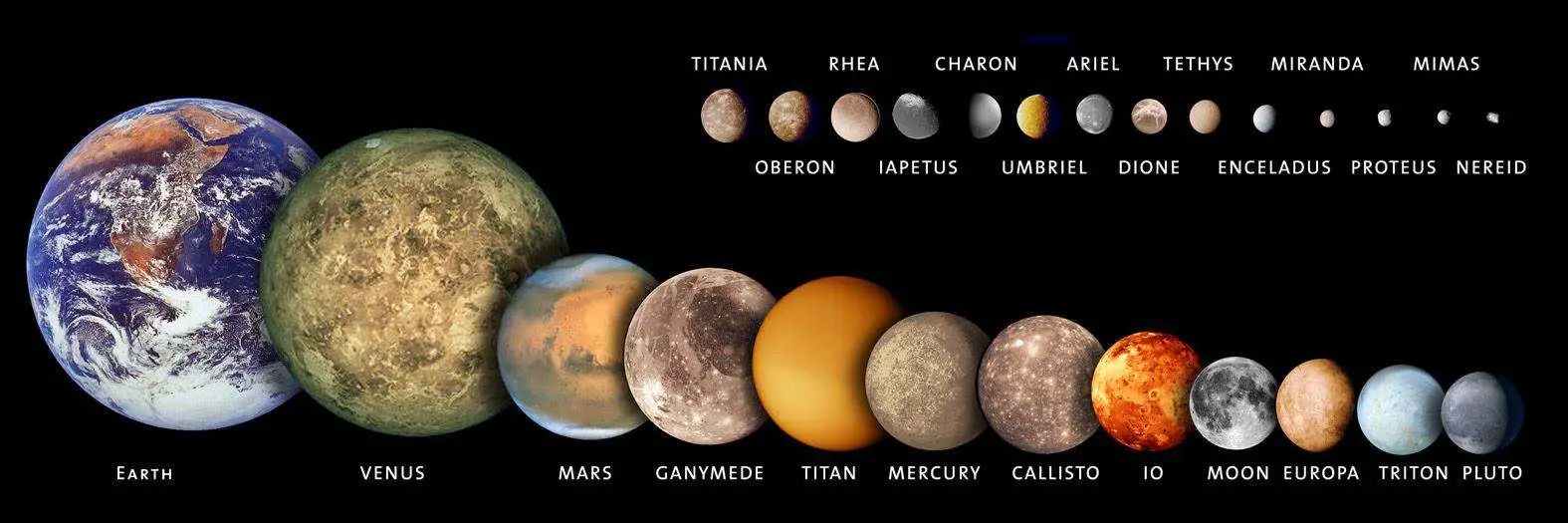On March 25, 1655, the Dutch mathematician, physicist, astronomer, and inventor Christiaan Huygens discovered Titan, Saturn’s largest moon and the second-largest natural satellite in the Solar System (after Jupiter’s Ganymede).
Today’s (March 25) story of what happened this day in Science, Technology, Astronomy, and Space Exploration history.

Huygens discovered Titan on March 25, 1655 using a refracting telescope with a 43x magnification that he designed himself. Huygens also was the first astronomer who realized that Saturn had rings.
In the same year, Huygens also observed and sketched the Orion Nebula (also known as Messier 42, M42, or NGC 1976). He succeeded in subdividing the nebula into different stars. The brighter interior now bears the name of the Huygenian region in his honor. Today, the Orion Nebula is of the most scrutinized and photographed objects in the night sky.
Titan, the largest moon of Saturn
With a radius of 2,574.7 km (1,600 miles), Titan is much bigger than Earth’s moon (radius: 1,737.4 km / 1,080 miles), and even larger than the planet Mercury (radius: 2,439.7 km / 1,516 miles). It is the only moon in our solar system that has clouds and a dense atmosphere, and the only world apart from Earth with liquids on its surface (they are methane lakes, not water).
With a radius of 2,634.1 km (1,637 miles), Ganymede, the largest moon in the solar system is only about 2% larger than Titan.

Titan’s metan cycle
The surface of Titan is one of the most Earthlike places in the solar system. The giant moon’s methane cycle bears a striking similarity to Earth’s water cycle, albeit at the much lower temperature of about 94 K (-179.2 °C or -290.5 °F). Methane exists as solid ice, vapor in the atmosphere and liquid as rain and in its lakes and seas.
Titan’s surface is sculpted by flowing methane and ethane, which carves river channels and fills great lakes with liquid natural gas.
Titan’s surface temperature is so cold that water ice plays the role of rock. It may also have volcanic activity as well, but with liquid water “lava” instead of molten rock.
But, the researchers find that Titan’s impressive methane-based hydrocarbon features may be a passing phenomena, the after-effects of a gigantic outburst of methane released from Titan’s interior eons ago.
A big impact could have been the culprit that drenched Titan in methane. Another possibility is volcanic activity that oozed methane slush, resurfacing the moon.
But the methane is not being replaced, so Titan’s “methane era” may one day draw to a close.
Titan is Drifting Away from Saturn
As a moon orbits a planet, its gravity pulls causes a temporary bulge in the planet as it passes. Over time, the energy created by the bulging and subsiding transfers from the planet to the moon, nudging it farther and farther out. For example, our Moon drifts 1.5 inches (3.8 centimeters) from Earth each year.
Just as our own Moon floats away from Earth a tiny bit more each year, other moons are doing the same with their host planets.
Scientists thought they knew the rate at which Titan is moving away from Saturn, but in 2020, they made a surprising discovery: using data from NASA’s Cassini spacecraft, they found Titan drifting 100 times faster than previously thought, about 4 inches (11 centimeters) per year.
Titan is currently 759,000 miles (1.2 million kilometers) from Saturn.
Titan’s atmosphere
Titan is the only moon that has a thick atmosphere in the solar system. At the surface, the atmospheric pressure is about 60% greater than on Earth.
Titan’s atmosphere is mostly nitrogen (about 95%) and methane (about 5%), with small amounts of other carbon-rich compounds.
Titan is less massive than Earth (its mass is about 0.0225 Earth’s or 1.829 Moon’s), its gravity doesn’t hold onto its gaseous envelope as tightly, so the atmosphere extends to an altitude 10 times higher than Earth’s-nearly 370 miles (600 kilometers) into space.
Possible extraterrestrial life
Numerous gravity measurements of Titan made by the Cassini spacecraft revealed that this moon is hiding internal, liquid water and ammonia ocean beneath its surface.
Huygens probe also measured radio signals during its descent that strongly suggested the presence of an ocean 35 to 50 miles (55 to 80 kilometers) below the moon’s surface. The discovery of a global ocean of liquid water adds Titan to the handful of worlds in our solar system that could potentially contain habitable environments and extraterrestrial life.
Scientists think the volume of the subsurface ocean can be more than 10 times greater the volume of the oceans on our planet.

Related: Oceans of the Solar System
Titan Touchdown by Huygens probe
Cassini-Huygens mission, named after astronomers Giovanni Cassini and Christiaan Huygens, comprised both NASA’s Cassini probe and ESA’s Huygens lander which would be landed on Titan. Cassini released the Huygens probe on December 25, 2004, by means of a spring and spiral rails intended to rotate the probe for greater stability.
It entered the atmosphere of Titan on January 14, 2005, and after a two-and-a-half-hour descent landed on solid ground. Cassini successfully relayed 350 of the pictures that it received from Huygens of its descent and landing site. Unfortunately, one of the Cassini receivers failed due to a software error and caused the loss of another 350 pictures.
The touchdown remains the most distant landing ever on another world.
Possible Future Colonization of Titan
Some scientists, including the American planetary scientist Amanda R. Hendrix, Ph.D. think that we should colonize Titan, instead of another planet or moon, Mars, for example. Some advantages of Titan over other places (especially Mars) are:
- It has a thick atmosphere which can protect humans from dangerous and very deadly solar radiation.
- It has a solid surface.
- The atmosphere is mostly nitrogen. It’s about 1% to 2% of methane. There’s no oxygen, but it’s not a big problem because there is plenty of water, H2O on the surface and in the sub-surface. So humans could make their own oxygen to breathe using water.
- Titan spends 95% of its time within Saturn’s huge magnetosphere, which adds an aditional shield from the solar radiation.
- On the surface and in the atmosphere, there are vast quantities of hydrocarbons and complex organic chemicals in solid and liquid form. They can easily be used for energy and rocket fuel.
- Thanks to its dense atmosphere, residents wouldn’t need pressure suits like other places in the solar system, including Mars and our Moon. Warm clothing and respirators would be enough. This would make things way less complicated.
But, first, we need to make huge developments in space propulsion in order to get there, since it is so far away from Earth. With today’s technology, the one-way trip takes seven years. So, the propulsion will have to be much faster.
Sources
- Titan (moon) on Wikipedia
- Titan on the NASA Solar System website
- Titan (in depth) on the NASA Solar System website
- Christiaan Huygens on Wikipedia
- “Saturn’s Moon Titan Drifting Away Faster Than Previously Thought” on the NASA website
- Titan’s Methane World – Not Built to Last? on the NASA Solar System website
- Moon Landings: All-Time List [1966-2025] - February 2, 2025
- What Is Max-Q and Why Is It Important During Rocket Launches? - January 16, 2025
- Top 10 Tallest Rockets Ever Launched [2025 Update] - January 16, 2025


